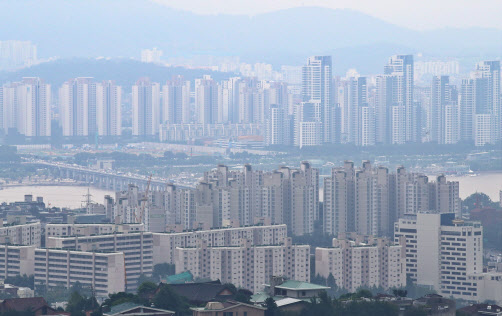“We need the strength of 660,000 Songpa-gu residents. Please allow the GTX-D route to enter Geoyeo and Macheon” (Songpa-gu online cafe)
The nerve wars of local governments are intensifying over the attraction of the GTX-D route. With the announcement of the GTX-D route in the first half of the year as early as the Ministry of Land, Infrastructure and Transport, local governments are already participating in the host war through their own services. Previously, due to the learning effect of a large increase in house prices in the GTX A, B, and C routes, residents seem to press the local government and the Ministry of Land, Infrastructure and Transport through signature campaigns. The Ministry of Land, Infrastructure and Transport said, “We plan to announce the GTX-D route plan in the first half of this year, reflecting the recommendations of local governments.”
|
100,000 signatures movement… From already to local government’s own service
According to the Ministry of Land, Infrastructure and Transport and local governments on the 15th, local governments are intensifying in relation to the GTX-D route plan to be announced in the first half of this year. In particular, Gyeonggi Province is actively voicing in relation to attracting, such as suggesting the GTX-D route last year.
The GTX-D route proposed by Gyeonggi Province is an east-west line that starts in Gimpo and runs to Hanam. In the meantime, Gyeonggi Province’s proposal is to go through Geomdan-Gyeyang, Bucheon, and Gangdong. Even Gyeonggi Province has already carried out a business feasibility review service for this route. The recent economic feasibility analysis (B/C) result was ‘1.02’, indicating that there is a business feasibility. If the analysis of economic feasibility exceeds 1, it is considered to be feasible. In addition to this, GTX-D routes in Gwangju, Gyeonggi-do, are in the process of being individually serviced.
In addition to Gyeonggi-do, there is a strong movement to attract GTX-D routes in Seoul. First, Gangdong-gu, Gangseo-gu, and Songpa-gu are leading the way.
Gangdong-gu delivered 100,000 resident signatures to the Ministry of Land, Infrastructure and Transport last year to attract GTX-D routes. In particular, as Gangdong-gu is included in the service line in Gyeonggi-do, expectations for the GTX-D line are high even within Gangdong. An official at Gangdong-gu Office said, “In particular, we are carrying out a feasibility review service for Cheonho Station, Godeok Station, and Gildong Ecological Park Station.”
In addition, Jin Seong-jun, a member of the Gangseo-gu district, made an open proposal in January to host the GTX-D route to Gangseo-gu by Minister of Land, Infrastructure and Transport Byeon Chang-heum. In addition, about 6,000 residents of Geoyeo-dong, Songpa-gu, have agreed to the current GTX-D route. The residents of Geoyeo-dong said, “The campaign is underway with the goal of 100,000 signatures.” Regarding this, a ward official said, “We are monitoring residents’ signing activities,” and said, “We will arrange the ward office’s position according to the results of the 100,000 signing campaign in the future.”
|
GTX 200 million won if the rumors come out… Ministry of Land, Infrastructure and Transport “Review of local government proposal”
The reason why residents, politicians, and provincial governors are working hard to attract GTX-D routes is because of the perception that GTX is the biggest development advantage. In addition, the D route was actually the last GTX route, and the residents’ learning effect about the huge increase in house prices, centering on routes A, B, and C, also worked.
Earlier, at the end of last year, when the news that the GTX-A line was coming to Changneung in Goyang-si was announced, the price of a nearby apartment complex jumped more than 200 million won. The 84㎡ for exclusive use of Wonheung-dong Ilstitch apartment in Donae-dong was sold for 860 million won on December 28, last year, but as soon as the news of GTX-A became known, the transaction was made at 1.09 billion won in one day. It jumped over 200 million won. Since then, a change of hands occurred for 1.1 billion won last month.
The same goes for the Sangnoksu area in Ansan. When the possibility that GTX-C could stop was raised, the asking price of nearby apartments jumped over 200 million won at once. Until the beginning of January, the current price of 45m2 for World Apartment, which had been sold for 280 million won, is 50,000 million won. It was about 300 million won.
Meanwhile, the Ministry of Land, Infrastructure and Transport is planning to announce plans for the GTX-D route in the first half of this year. Although a specific region has not been selected yet, the business feasibility, location, and balance will be considered comprehensively. In particular, it is expected that major stations will be selected based on recommendations from local governments.
Regarding this, the Ministry of Land, Infrastructure and Transport said, “The Seoul, Gyeonggi, and Incheon metropolitan areas suggested alternative routes to the Ministry of Land, Infrastructure, and Transport and submitted the contents of a pre-feasibility study.” He explained, “We are contemplating with specialized agencies about the rail network plan made by local governments around the country, and plan to announce the 4th rail network plan in the first half of this year.”
However, some point out that if the requirements of local governments are excessively reflected, the effect of GTX may be halved, unlike the original plan of’express railroad’.
City and economy representative Song Seung-hyun said, “There is a possibility that the number of stations will increase significantly due to the involvement of the local government, or additional new stations will be created even after the announcement of the basic plan.” It may not be a big boon.”


